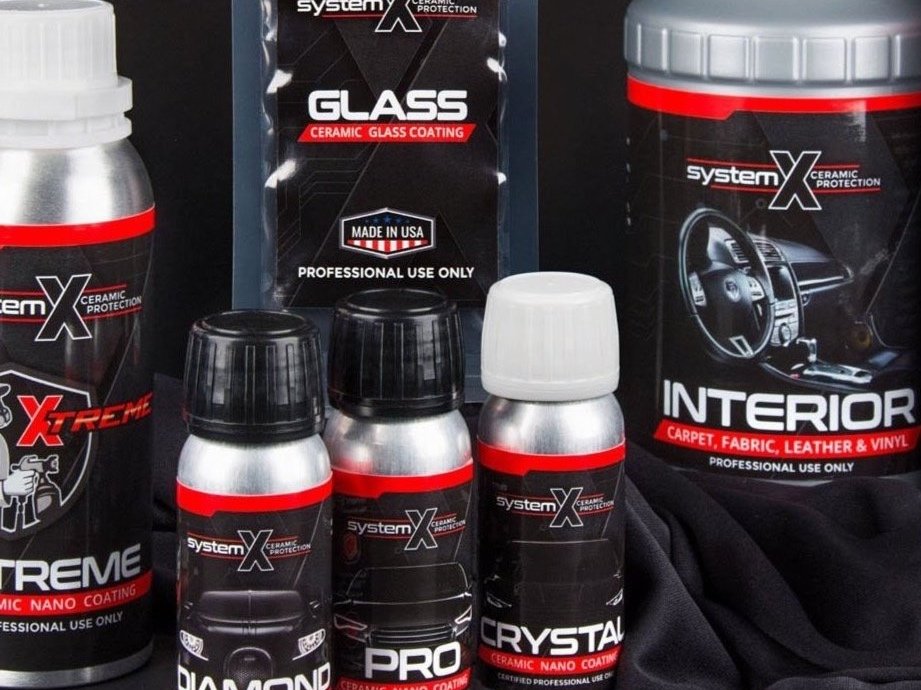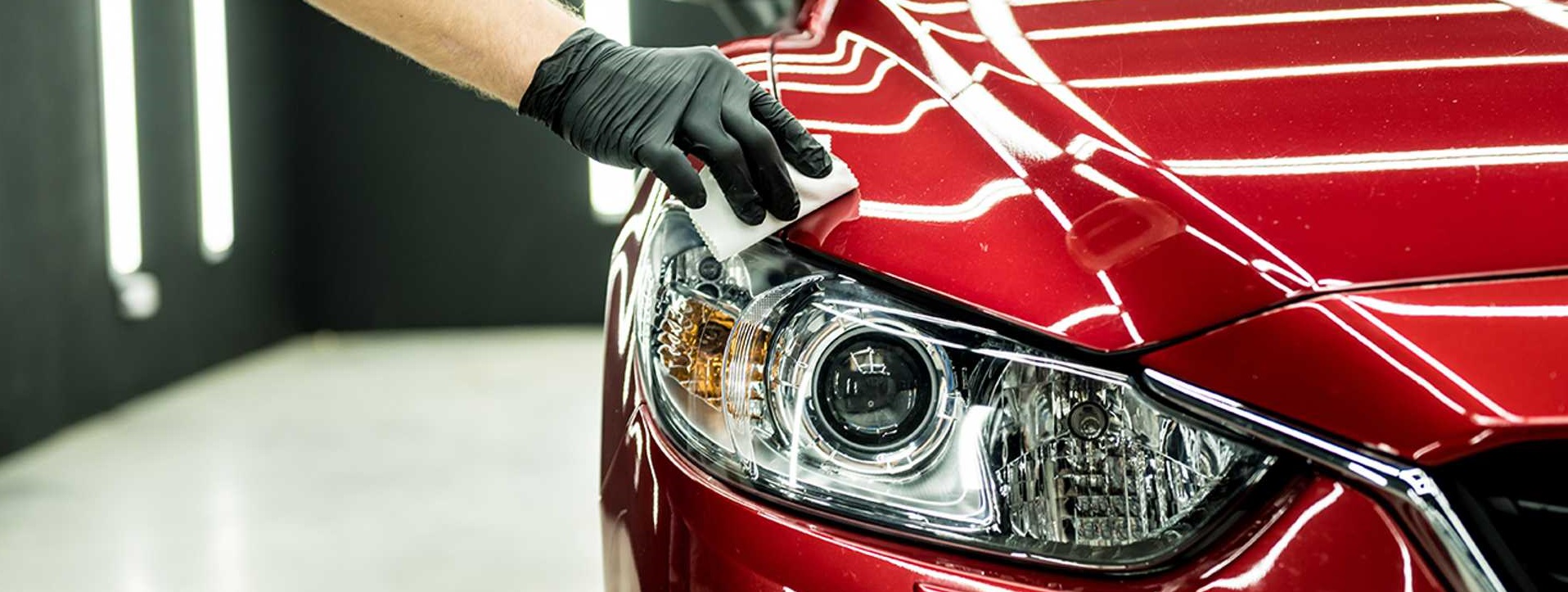How Ceramic Coating Philadelphia Guards Against UV Rays and Environmental Damage
Wiki Article
Why Ceramic Finish Is the Ultimate Service for a Remarkable Finish
Ceramic layer has emerged as a leading remedy for those looking for a remarkable surface for their automobiles, thanks to its impressive sturdiness and safety features. This innovative liquid polymer not only bonds effortlessly with factory paint but also uses a powerful obstacle versus typical hazards such as scrapes, UV rays, and ecological contaminants. Its hydrophobic residential or commercial properties streamline upkeep while enhancing aesthetic allure. Comprehending how this modern technology contrasts to standard approaches and discovering its application nuances can disclose also a lot more concerning its worth. What elements truly established ceramic finish apart?What Is Ceramic Coating?

When used properly, ceramic covering creates a hydrophobic surface that pushes back water and dust, making it less complicated to keep and clean up. Unlike typical waxes or sealants, which normally offer brief security, ceramic coatings can last for several years, depending on the item quality and application method. The procedure of applying ceramic coating calls for careful preparation, consisting of comprehensive cleansing and in some cases repaint modification, to ensure optimal bonding and performance.
Ceramic coverings are not limited to automobile surface areas; they can likewise be used on different materials, consisting of glass, steel, and plastics, offering a versatile service for enhancing protection. Generally, ceramic layer stands for a significant innovation in surface area protection modern technology, incorporating both functional and aesthetic advantages for a vast array of applications.
Benefits of Ceramic Finishing
While several surface area defense alternatives exist, the benefits of ceramic finish stick out as a result of its special residential properties and resilient performance. One of the primary benefits is its phenomenal toughness. Ceramic Coating Philadelphia. Unlike traditional wax or sealers that call for frequent reapplication, ceramic layers offer a resilient layer that can last for several years, substantially lowering upkeep initiativesAn additional remarkable benefit is enhanced security against environmental contaminants. Ceramic coverings produce a hydrophobic surface area that drives away water, dirt, and various pollutants, making it less complicated to clean. This function not just maintains the lorry's look yet also minimizes the danger of deterioration and oxidation, particularly in rough climate conditions.
In addition, ceramic coatings provide exceptional resistance to UV rays, stopping fading and degradation of paint in time. This UV security is critical for keeping the aesthetic worth of vehicles and surfaces subjected to direct sunshine.
In addition, the shiny coating accomplished with ceramic finish boosts the overall visual charm, providing surface areas a showroom-quality luster. Generally, ceramic layers stand for a significant improvement in surface area defense modern technology, offering long-lasting benefits that accommodate both functional and visual requirements.
How It Functions
Recognizing the scientific research behind ceramic coatings exposes just how they give such amazing security and durability. At its core, a ceramic finish is a liquid polymer my site that chemically bonds with the automobile's manufacturing facility paint.
The application procedure includes numerous actions, including surface area preparation, which is critical to achieving optimal attachment. As soon as applied, the covering undergoes a healing process, throughout which it hardens and creates a semi-permanent bond with the paint surface area. This bond is what differentiates ceramic finishes from typical waxes and sealants, giving a longer-lasting protective obstacle that can sustain for years.
In addition, the density of the layer can enhance its protective high qualities, making sure that it can withstand severe conditions. Ultimately, the science of ceramic finishings combines sophisticated products with ingenious application techniques to supply an unmatched level of defense and visual enhancement for automobiles.
Contrast With Conventional Approaches
When contrasted to typical paint protection approaches such as waxes and sealants,The advantages of ceramic coverings become particularly apparent. While waxes offer a temporary sparkle, typically lasting a couple of weeks to a number of months, ceramic finishes provide a durable safety layer that can sustain for several years. This sturdiness substantially minimizes the regularity of reapplication, making ceramic coatings an extra affordable remedy in time.In addition, typical techniques commonly call for extensive prep work and multiple applications to attain an acceptable degree of security. On the other hand, ceramic coatings bond at a molecular level with the lorry's surface area, creating a robust shield against ecological impurities like UV rays, acid rain, and roadway salts. This bond boosts the automobile's resistance to scratches and swirl marks, which are common with traditional waxes and sealers.
Moreover, the hydrophobic properties of ceramic finishes repel water and dirt, leading to much easier cleaning and maintenance. In comparison, wax and sealant-treated surfaces can bring in gunk, requiring more constant washing - Ceramic Coating Philadelphia. In general, ceramic finishings not just offer exceptional protection however also supply a much more aesthetically enticing and long-lasting surface, establishing them as the preferred selection for discerning lorry owners
Application and Maintenance Tips

Utilizing a foam applicator, use the coating in tiny sections, following the producer's guidelines relating to density and overlap. Allow sufficient curing time between layers, typically 24-hour, to make certain correct bonding. After application, it is important to avoid direct exposure to water or severe elements for at least a week to allow the layer to fully cure.
In addition, utilizing a ceramic maintenance spray can enhance the layer's hydrophobic residential properties and long life. Regular evaluations for any signs of wear will assist keep the finish's integrity and protect that beautiful surface.
Verdict
In final thought, ceramic covering arises as a superior choice for accomplishing a More Bonuses remarkable automotive surface. By forming a robust bond with factory paint, ceramic finishing efficiently guards against scratches, UV rays, and ecological contaminants.
Report this wiki page